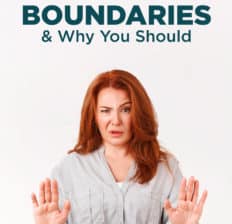This Dr. Axe content is medically reviewed or fact checked to ensure factually accurate information.
With strict editorial sourcing guidelines, we only link to academic research institutions, reputable media sites and, when research is available, medically peer-reviewed studies. Note that the numbers in parentheses (1, 2, etc.) are clickable links to these studies.
The information in our articles is NOT intended to replace a one-on-one relationship with a qualified health care professional and is not intended as medical advice.
This article is based on scientific evidence, written by experts and fact checked by our trained editorial staff. Note that the numbers in parentheses (1, 2, etc.) are clickable links to medically peer-reviewed studies.
Our team includes licensed nutritionists and dietitians, certified health education specialists, as well as certified strength and conditioning specialists, personal trainers and corrective exercise specialists. Our team aims to be not only thorough with its research, but also objective and unbiased.
The information in our articles is NOT intended to replace a one-on-one relationship with a qualified health care professional and is not intended as medical advice.
How to Set Healthy Boundaries for Self-Care and Stronger Relationships
December 31, 2021

Establishing healthy boundaries is a foundation to establishing respectful relationships with family, friends, neighbors and co-workers. Without set boundaries, relationships can lead to discomfort and even violation, which may set off a cycle of mistrust and isolation in your future.
Because we don’t actually see boundaries, they aren’t visible, so many of us are confused about what they are and how to set them. You may feel guilty or selfish setting your own limits on friends or loved ones, but remember that this is an important part of self-care and leads to stronger, healthier relationships.
What Are Boundaries?
Boundaries are limits or space between yourself and another person that are set in order to create a safe and healthy relationship. These can be physical or emotional limits that ensure a person’s mental and emotional health are respected and maintained.
Some people have rigid boundaries, and others have loose boundaries. Both can be problematic if they are hindering your ability to maintain close and meaningful relationships.
Do you have trouble keeping friends or avoid close relationships? That may be the result of very strict or rigid boundaries.
On the other hand, if you have trouble saying “no,” are always putting the well-being of others before your own and get too involved in people’s personal lives, your sense of limits may be too loose.
Establishing clear boundaries for all of your relationships will enhance your connections by setting expectations. You can show people what you expect from them and let them know what they should expect from you.
Types
1. Physical
We’ve all likely experienced someone crossing a boundary with our personal, physical space. Crossing a physical boundary can be violating your limit on touch, which can be as simple as going in for a hug when you prefer a handshake or no touch at all.
This may be easier for you to indicate over less visible boundaries because it can be seen and felt physically.
Physical boundaries also include your personal space, like your home, bedroom or office. Crossing the line, for you, may be entering your workspace uninvited or unannounced, while others may have more of an open door policy.
Everyone’s physical boundary is different, which is why it’s important to communicate your individual needs to maintain a healthy relationship.
There are also boundaries with physical activity or exercise. These can be limits that you place on yourself, like resting when you’re tired, eating when you’re hungry and not eating when you aren’t.
It’s healthy to push yourself to achieve a goal but within the limits of your comfort zone so you maintain positive feelings about your actions and where you’re headed.
2. Sexual
Sexual boundaries exist between people who are married, people dating and even between friends with a platonic relationship. Asking for and confirming consent is a major sexual boundary that’s mandatory to create a safe, respectful space.
It’s also important to discuss what you’re comfortable with, what you like and what you don’t like when engaging in a physical, intimate way.
Pressuring someone into physical contact, making unwanted sexual comments and touching someone without consent are all actions that cross sexual boundaries. Sexual boundaries can even exist among married couples or couples who live together.
3. Emotional
Each relationship requires a certain amount of emotional energy, and that’s a limit that you have to set for yourself. Passing emotional limits may be sharing too much information (sometimes called “emotionally dumping”) and expecting a meaningful, emotional response, or on the opposite side of the spectrum, being unable to listen when being confided in emotionally by a friend or loved one.
Research shows that unlike a tangible wall that keeps something in or out, emotional boundaries are a necessary space between people and allow for a sense of individuality and separateness. Establishing this type of boundary contributes to your unique identity.
Crossing the emotional limit in a relationship may look like asking inappropriate or unwanted questions, criticizing people for the way they feel or dismissing their reactions, and telling people how they should (or should not) feel about a situation.
4. Intellectual
In our recent history, discussing global and political matters has become more prevalent, which is why setting intellectual boundaries is important. You’ve heard of the phrase “agree to disagree,” and that’s a simple version of intellectual limits that help maintain respectful relationships.
Respecting individual opinions and stopping conversations that are headed in the wrong direction are ways to set healthy intellectual boundaries. It is your choice whether or not you choose in engage in intellectual conversations that may push you and call your beliefs into question.
If you’re willing to have these types of sometimes uncomfortable conversations, there can be a point where you “draw a line in the sand,” like if statements become offensive.
5. Time and Energy
Do you ever feel like people are taking advantage of your time? Maybe they are asking for favors or tasks to be completed after working hours or assume that you’ll put in more time than you agreed to on a project.
These are examples of crossing time boundaries. This has become especially difficult as more and more people are working from home and the line between personal time and work time has blended.
Setting your own time boundaries ensures that you get the personal downtime you need for optimal health and helps you avoid burnout, which is becoming more common among American adults. In fact, a scientific review found that burnout syndrome is a serious public health problem.
If you’re constantly overcommitting and giving in to requests, you may have to set your own needs and goals aside, which can lead to resentment and disappointment. The same is true when you’re asking someone else to use her time, so be conscious of requests, and ask questions like, “Do you have the time for this today?”
6. Financial/Material
Are you constantly borrowing something from a friend or family member, or is someone frequently asking you to use a material object? This can include borrowing a car, sweater, computer, money and more — they are materials that should have limited access to other people, depending on your comfort levels.
Although it may seem petty to get worked up over sharing your possessions, when done excessively, it can start to feel like you’re being taken advantage of, and that can lead to feelings like resentment and anger.
How to Set Healthy Boundaries
While some types of boundaries, like financial, material and physical limits, are easier to detect, others are less noticeable and require you to rely on your innate alert system. Sometimes the red flags don’t start waving in your head until you already feel disrespected or maybe even taken advantage of, which is why it’s so important to set healthy boundaries from the get-go.
Ready to set your own healthy boundaries? Start by following these steps:
1. Write It Down
When setting personal limits, start by doing some self-reflection by writing down what makes you feel comfortable and respected in a relationship and what makes you feel uncomfortable and disrespected in a relationship. Studies show that journaling or engaging in emotion-focused writing has positive outcomes and promotes self-awareness.
It’s very likely that you already have boundaries in place, and you haven’t been aware of it. Just identifying the impacts of certain actions helps you start formulating your own healthy boundaries.
2. Be Open
This can be difficult and may even feel awkward, but it’s best to be open and transparent about your limits. You don’t have to do this by making demands — instead you can offer up information about yourself that will establish your personal limits.
For example, say, “I’m a hugger. Are you cool with hugs?? This way the appropriate action is clear right away.
On the flip side, say, “Let’s try a fist pump. That makes me feel most comfortable.”
At the end of the day, people want to respect your boundaries, so it’s helpful when you make your comforts (and discomforts) obvious.
When it comes to professional or time boundaries, make your intentions clear without apology. Send notifications of your time off, turn on “do not disturb” features after work hours, and set a specific cut-off time for answering emails or messages.
3. Be Consistent
Ever hear of sending mixed signals? That can be when you show a boundary sometimes but not others.
Being consistent is key when you want your limits to be respected, so stick to them and reinforce the standards you already have in place.
Another really important time to be consistent is when communicating on social media. People often feel emboldened behind a screen and can overstep boundaries, so be sure to set the same standards on social media that you would in a face-to-face conversation.
If needed, take a step back, and limit your time on social media platforms.
4. Reflect
It is possible to have too many boundaries, to the point that it impacts your ability to form close relationships. If you make mindful reflection part of your wellness routine, you’ll have a chance to consider the boundaries you’ve placed and whether or not they’re benefiting your relationships and well-being. In other words, follow your gut.
Are your boundaries supporting healthy relationships, promoting better self-confidence and allowing you to be open with others? If the answer is “no,” then contemplate how you can tweak the limits you have in place to get closer to these goals.
Recognizing Others’ Boundaries
Now that you’re becoming more open and mindful of your own healthy boundaries, it will be easier for you to recognize the limits put in place by others. Make an effort to read their cues, and if you’re confused about their limits, just ask.
You can say something like, “I know for me, getting messages throughout the day feels like I’m loved, but how does that feel to you?” Sometimes, putting yourself out there first will make it easier for loved ones to be more vulnerable and forthcoming with you.
Risks and Side Effects
It can feel hard, awkward and selfish to set clear boundaries with your family, friends, romantic partners and co-workers, but it’s a critical part of self-care and self-awareness. Taking the time to establish your own limits helps you to learn more about yourself and what makes you feel loved and secure, and it allows people to get to know you deeper in a safe space.
Put the risks of discomfort aside, and do the work now — it will get easier as you establish your healthy limits and foster meaningful relationships based on trust and respect.
Conclusion
- Boundaries are limits or space between yourself and another person that are set in order to create a safe and healthy relationship. There are many types, including emotional, physical, sexual and financial boundaries.
- Setting healthy limits for your interactions with friends, family, partners and co-workers is crucial self-care and deepens your meaningful relationships.








